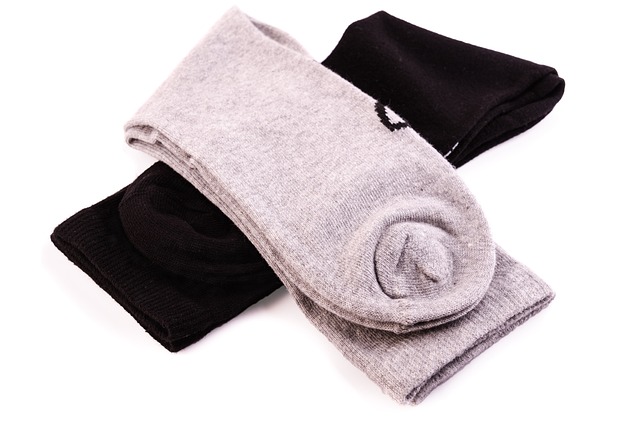Mammogram Guidelines For Women Over 40
Mammogram Guidelines For Women Over 40,
For women in their 40s, the advice on mammograms can vary, but there are some key points to consider. Generally, most health experts recommend starting regular mammograms at age 40. Why? Because breast cancer risk increases with age, and catching it early can make all the difference. Think of a mammogram as your proactive way of staying one step ahead of potential problems, much like checking your car’s engine before a long road trip.
Now, what does “regular” mean? Typically, it’s advised to have a mammogram every year or every two years, depending on your personal risk factors and family history. If you have a family history of breast cancer or other risk factors, your doctor might suggest starting even earlier or getting screened more frequently. It’s like setting up more frequent check-ins if you’re managing a high-stakes project at work.
Mammogram Guidelines For Women Over 40, And let’s not forget, while mammograms are a vital tool, they aren’t the only part of breast cancer screening. Combining them with regular self-exams and clinical exams can offer a more complete picture of your breast health. It’s like using multiple strategies to ensure you’re covering all your bases in a game plan.

Navigating the Mammogram Maze: Essential Guidelines for Women Over 40
So, you’ve hit the big 4-0, and now you’re grappling with the world of mammograms. It can feel like you’re being tossed into a labyrinth of medical jargon and appointments. But don’t fret—understanding the basics can turn this maze into a walk in the park.
First off, why are mammograms so crucial after 40? Simply put, as we age, the risk of breast cancer increases. A mammogram is like a super-sleuth for detecting changes in your breasts that could hint at something serious. Think of it as your trusty sidekick in maintaining breast health.
Now, when should you start getting mammograms? The general recommendation is to begin annual screenings at age 40. But what if you have a family history of breast cancer? That could mean starting earlier, so it’s a good idea to have a chat with your doctor about your personal risk factors.
Scheduling your mammogram can sometimes feel like navigating a busy city without a map. Here’s a tip: try to schedule your appointment a week or so after your period. Why? Hormonal changes can make your breasts tender, and scheduling around this time can make the experience more comfortable.
Mammogram Guidelines For Women Over 40, And let’s talk about what happens during the exam. The process is quick—usually just 15-30 minutes. You’ll be asked to stand in front of a machine that gently compresses your breasts to take X-ray images. Yes, the compression can be uncomfortable, but it’s brief and essential for getting clear images.
Mammogram Guidelines For Women Over 40, Remember, the goal is to catch potential issues early. The mammogram might show normal results, or it could lead to further testing. If more tests are needed, don’t panic. It’s all part of the process of ensuring your health and well-being.
Breaking Down Mammogram Recommendations: What Women Over 40 Need to Know
Mammogram Guidelines For Women Over 40, First off, let’s break it down. For women over 40, mammograms become a crucial part of your annual health routine. Why? Because the risk of breast cancer increases with age, and catching it early can make all the difference. Think of a mammogram as a safety net—it’s designed to spot potential issues before they turn into serious problems.
Mammogram Guidelines For Women Over 40, Most health experts recommend starting mammograms at age 40 and continuing them annually or biennially, depending on your personal risk factors. But here’s the kicker: not all guidelines are created equal. While some organizations say 40 is the magic number, others suggest starting at 45 or even 50. It’s like having a menu of options, but which one is right for you?
If you have a family history of breast cancer or genetic predispositions, your doctor might suggest starting earlier or having more frequent screenings. It’s all about tailoring the recommendations to your individual health profile. Just as you wouldn’t use a one-size-fits-all approach to choosing clothes, your health screening should be customized to fit your unique needs.
Mammograms can be a bit uncomfortable, but it’s a small price to pay for peace of mind. Imagine it as a quick but vital check-up, like getting your car serviced to avoid a breakdown. The slight discomfort is a fraction of the time and effort compared to dealing with a more serious issue down the road.
The New Rules for Mammograms: A Guide for Women in Their 40s
Picture this: your 40s are like the crossroads of your health journey. It’s when your body might start whispering (or shouting) for extra attention. So, here’s the scoop—recent guidelines are shaking up the mammogram game. Gone are the days of just sticking to the “start at 40 and go from there” mantra. Now, experts are suggesting a more personalized approach.

So, what does this mean for you? It’s time to have a heart-to-heart with your healthcare provider about your specific needs. Do you have a family history of breast cancer? Are you dealing with other risk factors? These are the questions that could influence your mammogram schedule.
Imagine your health as a unique recipe—there’s no single recipe card that fits everyone. Just as you might adjust a recipe based on the ingredients you have, your mammogram schedule should be adjusted based on your health ingredients.
In this new era of mammogram guidelines, proactive and personalized care is key. Stay informed, stay engaged, and let’s navigate these changes together. Your health is your top priority, so make sure you’re always in the know and ahead of the curve!
Your 40s and Beyond: How to Stay Ahead of Breast Health with Updated Mammogram Guidelines

Mammogram Guidelines For Women Over 40, The process might seem daunting, but mammograms are quick and relatively simple. During the screening, your breasts are gently compressed between two plates to get a clear image. It’s a bit uncomfortable, but the discomfort is brief compared to the peace of mind you’ll get. The updated guidelines emphasize not just starting earlier but also keeping up with regular check-ups. Consistency is key here—it’s like maintaining a regular exercise routine for your heart; regular screenings are your best defense.
Mammogram Guidelines For Women Over 40, Additionally, these updated guidelines reflect a shift towards personalized care. Not every woman’s risk is the same, so some may need additional screenings based on family history or other factors. This personalized approach is akin to tailoring a fitness plan to meet your specific health needs, ensuring that your breast health management is as effective as possible.

Mammograms After 40: Debunking Myths and Understanding the Latest Guidelines
Mammogram Guidelines For Women Over 40, First off, if you’re 40 or older, mammograms are highly recommended, even if you feel perfectly healthy. This screening method is like having a high-resolution photo of your breast tissue. It helps spot any issues before they become serious problems. It’s not just about family history; it’s about catching potential problems early.
Pain? Many women say it’s a quick, uncomfortable pinch, but it’s over in a flash. Think of it as a short-term inconvenience for long-term peace of mind. Modern technology has also made these screenings more comfortable than ever.
And, let’s bust another myth: mammograms aren’t just for women with symptoms. Even if you feel fine, routine mammograms are crucial. Why? Because early-stage breast cancer might not cause any symptoms, but it can be found through a mammogram.
Guidelines suggest starting mammograms at age 40 and continuing every one to two years. This frequency helps in catching any changes early, giving you the best chance for effective treatment. Some might argue that starting at 50 is enough, but earlier screening offers an edge, especially if there’s a personal or family history of breast cancer.
Mammogram Guidelines For Women Over 40, In essence, mammograms after 40 are your proactive step towards staying healthy. It’s about being ahead of potential issues and giving yourself the ultimate peace of mind. Don’t let myths hold you back; regular screenings could be the key to maintaining your well-being.
Why Mammograms Matter: A Comprehensive Look at Guidelines for Women Over 40
Mammogram Guidelines For Women Over 40, So, what’s the scoop on when to start? Most guidelines suggest that women should begin annual mammograms at age 40. Why? Because breast cancer is more likely to pop up as you get older, and catching it early can be a game-changer. The American Cancer Society and other health organizations agree that starting at 40 gives you a head start, allowing for earlier detection and treatment if needed.
But let’s be clear, mammograms are not perfect. They can sometimes produce false positives, which might lead to additional tests and a fair amount of stress. However, the benefits far outweigh the potential downsides. Early detection through mammograms often leads to less aggressive treatments and better outcomes.
Mammogram Guidelines For Women Over 40, Moreover, regular mammograms can help track changes over time, offering a clear picture of your breast health. If you have a family history of breast cancer or other risk factors, your doctor might suggest starting even earlier or having more frequent screenings.
In essence, mammograms are like a safety net for your health, offering peace of mind and a proactive approach to breast cancer prevention. They’re a simple yet powerful tool in the quest for early detection and a healthier future.
From Prevention to Early Detection: Mammogram Tips for Women Over 40
First off, timing is everything. If you’re over 40, you should start scheduling your mammograms annually. Think of it like changing the oil in your car. Regular maintenance can prevent bigger problems down the road. And just like you wouldn’t skip an oil change, don’t skip your mammogram.
Preparation can make your visit smoother. Wear a two-piece outfit to make changing easier and avoid using deodorant, lotions, or powders on your underarms or breasts before the exam. These substances can interfere with the imaging results.
Mammogram Guidelines For Women Over 40, What happens during a mammogram? The process is straightforward: you’ll place your breast on a flat surface, and a machine will gently compress it. It might feel uncomfortable, but it’s quick, and the discomfort is temporary. This compression is crucial because it spreads out the breast tissue, helping to get a clearer image and increasing the chances of spotting any potential issues early.
Post-mammogram, you’ll likely wonder about your results. They usually take a few days to come back. If anything seems out of the ordinary, don’t panic. Often, additional tests are needed for a clear picture, but that doesn’t necessarily mean there’s a problem.
Remember, keeping up with your mammograms is like having a safety net. It’s all about catching potential issues early, which can lead to more effective treatments and better outcomes. So, embrace the process, and take charge of your health. Your future self will thank you!
Frequently Asked Questions
What Are the Risks of Mammograms for Women Over 40?
Mammograms for women over 40 can involve risks such as false positives, which may lead to unnecessary stress and additional tests, and false negatives, which might miss some cancers. Additionally, repeated exposure to radiation, though minimal, is a consideration. It’s important to weigh these risks against the benefits of early detection.
How Often Should Women Over 40 Get Mammograms?
Women over 40 should get mammograms every 1 to 2 years, as recommended by most health organizations. Regular screenings help detect breast cancer early, improving treatment outcomes.
What Are the Newest Guidelines for Mammograms in Women Over 40?
Recent guidelines suggest that women over 40 should start annual mammograms to detect breast cancer early. The ultimate goal is to catch any issues before symptoms develop, improving treatment outcomes.
How Do I Prepare for a Mammogram?
Mammogram Guidelines For Women Over 40, To prepare for a mammogram, avoid using deodorants, powders, or lotions on your breasts and underarms on the day of the exam. Wear a two-piece outfit for easier access and inform the technician if you have any breast implants or recent changes in your breast health. It’s helpful to schedule your appointment for a time when your breasts are less likely to be tender, such as a week after your menstrual period.
When Should I Start Mammograms After 40?
Mammogram Guidelines For Women Over 40, Mammograms are recommended to start at age 40 for routine breast cancer screening. However, if you have a family history of breast cancer or other risk factors, consult your doctor to determine the best time to begin screening.
Comments are closed.